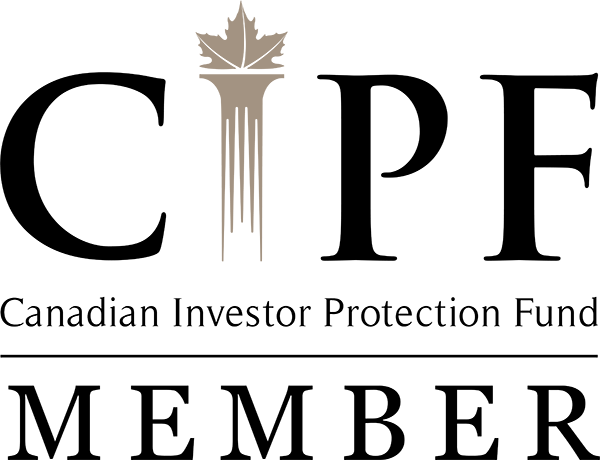Financial Planning Myths

Financial Planner Ines Iraoui returns to the podcast to discuss some common financial planning myths, including misconceptions around:
- Retirement planning
- TFSAs
- Non-registered accounts
- RESPs
Please subscribe, rate and review. Reach out at advantagedinvestorpod@raymondjames.ca
Transcript
Chris: Hello and welcome to the Advantaged Investor, a Raymond James Limited podcast. A podcast that provides perspective for Canadian investors who want to remain knowledgeable, informed, and focused on long-term success. We are recording this on April 20th, 2023. I'm Chris Cooksey from the Raymond James Corporate Communications and Marketing Department, and I am speaking with financial planner Ines Iraoui. The NHL playoffs have just started, so it's appropriate to have a guest making their hat trick appearance on the podcast. Previously Ines and I spoke about RESPs. That was episode 47. And earlier this year in episode 60, we spoke about converting RRSPs to RRIFs. Today Ines and I will highlight some financial planning myths.
Welcome, Ines. How are you?
Ines: I'm good. Thank you, Chris. How are you?
Chris: I'm very good. Very good. Thank you. You help a lot of people plan their financial futures and I'm sure you've run into your fair share of misconceptions with what clients believe, not necessarily what the actual situation is. So I think this is an important episode and we have a lot to get to so we'll jump right in. And let's just talk broadly around financial planning. It means more than planning for your retirement. Is that correct?
Ines: That's right. There is a misconception that financial planning is only retirement planning, but really, financial planning, or I should say full comprehensive financial plan, holds many aspects. It will review cash management, education, planning, market depth. Credit and third party risk taxation of income and retirement income risk management. It reviews insurance and protection needs, illness and disability. It holds also tax saving strategies, a full estate plan. And we also calculate taxes and debt.
Chris: So a lot more than I want to retire at 65. How do I get there?
Ines: Exactly. Yeah. It's a little more complex and we try to add value, of course, with all the advice.
Chris: Makes sense. Now one of the things we'll talk about now is our RRSPs and some of those myths. And I guess the opening one is anyone can open an RRSP, which is obviously, I think false. Is that correct?
Ines: That's, I would say yes and no, but it's not just fully true. Right. So to open an RRSP, you have to reside in Canada. So let's say US citizen just comes here three months a year, they cannot open an RRSP.
Ines: You have to also work in Canada because it's your work income that will create a contribution room for your RRSP.
Chris: Okay. Makes sense. So you have to live here and you have a job here. And of course something that changes regularly, but I don't think, I'm pretty sure you can't contribute just whatever you want to. With your RRSP there are certain limits involved?
Ines: Right. So you cannot contribute any amount to an RRSP. The work income is the factor that is taken into consideration to calculate your personal contribution room. So everyone's contribution room is different based on their personal income up to a certain limit.
Chris: And people can go back and get more details about this on our previous podcast about your RRSP and the age of 71. So can you contribute to an RRSP after age 71?
Ines: That's a myth that has some truth to it, I will say. You normally can't contribute past the age of 71, but you can do so in a very specific case. So let's say someone who is 72 has a spouse or partner who is younger than 71 or younger than 72 anyway, who has a spousal RRSP. And that person still has RRSP contribution room. So there's a lot of factors here you, that a person can contribute to their spouse's RRSP using their own personal contribution room, not the spouse's contribution room.
Chris: Okay. So interesting. So it's true that you can't do your own contribution, but to a spouse there are ways to still contribute to an RRSP, correct?
Ines: Yes. And you can deduct that contribution to your own personal.
Chris: Now, if I were to say to you, Ines, RRSPs are fully tax free, you would say what to me?
Ines: Absolutely not. So, RRSPs are a tax deferral account, which means they allow to deduct taxes in your working years. They also allow the funds to grow tax-free when they are invested, but then these funds will be taxed when you withdraw them to fund your retirement lifestyle.
Chris: Okay. So grows tax free, but when I actually use the money, it's like I guess, salary?
Ines: That's right. So when it's withdrawn from your RRSP, the moment that it's withdrawn is considered income, write a paycheck or whatnot.Chris: Now, I heard that you have to start withdrawing from your RRSP when you retire, or is it at age 65? How does that work?
Ines: So it's none of the above. No, you don't have to start withdrawing from the RRSP when you retire. So some people obviously retire way earlier. Let's say age 55 or 58 or 62. You don't have to start withdrawing from your RRSP then and you also don't have to withdraw from your RRSP at age 65, the latest you can withdraw from your RRSPs age 72, but at that time it's because it has to be converted to a RRIF, right? So that's really the latest that you can withdraw from your RRSP slash RRIF.
Chris: Now you have your RRSP, and you have to convert it to a RRIF. Does all of your RRSP have to go into that RRIF?
Ines: Yes and no. So you have to convert all of your RRSP to a RRIF in the year you turn 71. But just like I said in a previous question you don't have to do that before that age. And let's say someone who retires at age 65 only wants to convert a portion of their RRSP, they can do just a portion of it.
Chris: They don't have to do the full RRSP. So then you could have like whatever, a lump sum that you would obviously be taxed on and, and all that stuff. But if you wanted some of that money to, I don't know, travel or whatever, you could pull it all out there and, and then still have your RRIF with the other portion?
Ines: That's right. Yeah, because the RRIF generates a minimum mandatory withdrawal. So that's why some people may not want to convert fully the RRSP to a RRIF prior to age 71.
Chris; Now, is there a maximum amount you can withdraw from an RRSP or a RRIF?
Ines: No, no. So there is no maximum amount, but it is not recommended to withdraw the full amount really for tax purposes, because the marginal tax suit would be way too high and then it's not beneficial. But there is definitely no maximum on RRSP or RRIF withdrawals.
Chris: All right. And now when it comes to CPP or QPP obviously that's the provincial or Quebec Provincial Pension Plan. Do you have to, to apply and, and start that at age 65 or are there other options within that government program?
Ines: Right. So it is a very common myth. I have had a lot of clients ask. So it's a specific case. Let's say the client has receives an employer pension money from a, an employer's plan pension plan, sorry. And that pension plan starts, let's say at age 55 or at age 60, but they know that when they will reach the age of 65, the pension plan will be reduced. So that their CPP or QPP may start, most people think that when their employer's pension plan is reduced at age 65, they must start taking their CPP or QPP, their government benefits, but they don't. So they can choose to defer the government benefits up until age 70. So why? That could be beneficial because the deferral, there is a deferral indexation on those government benefits and from, so yes, their pension, their employer's pension plan will be reduced at age 65. From this age 65 to age 70 before they receive their government benefits, they can use, for example, withdrawals from RRSP, TFSA or non-registered investments if they need to cover part of their lifestyle expenses.
Chris: That's dependent on the client, right?
Ines: Exactly. Yes. That's a good, good comment because what will happen is a comprehensive financial plan will determine a good strategy to follow in terms of retirement income withdrawal.
Chris: So it depends on the person. There's no good solution for everyone. And as most of the stuff, I, as I said, you've dealt with quite a few clients in your career and I doubt very many of them are, are the same, right?
Ines: No, no. No's different and no plan that I've done looked like another one at all. Never.
Chris:. All right. Well, Ines, let's move to some of the myths around other investment accounts. We'll start with TFSAs, if that's all right with you.
Ines: Yes.
Chris: Anyone in Canada can open a TFSA. True or false?
Ines: Anyone? Yes and no. So you have to be 18. Okay. And you have to live in Canada to have a contribution room.
Chris: Okay. And now, Obviously with RRSPs, part of the benefit of those is the tax receipt you get for your yearly tax return. Do you get a tax receipt for your TFSA contributions?
Ines: No, because TFSA contributions are not tax deductible, you do not receive a tax receipt to file for your taxes when contributing to TFSA. But because the contributions are not tax deductible, the withdrawals from the TFSA are also not taxable, which means you don't have a tax or fiscal document for withdrawals in your, from your TFSA.
Chris: Now when it comes to contributions and withdrawals with the TFSA you can just do that as many times as you want. Or what are the rules around that?
Ines: So you cannot contribute as many times as you want, not really technically. So you can contribute up to the amount of your contribution room, and if you contribute more, there is a penalty. But you can definitely withdraw as many times as you want. There is a little thing to consider. However, when you make a withdrawal, you have to wait until next year to be able to put it back in your TFSA. So for example, if you have maximized your TFSA contribution this year in March and decide to withdraw the full amount of your TFSA this year, let's say in May. You have to wait until January, 2024 to be able to contribute again to your TFSA. You cannot make the withdrawal in May and then put it all back in June, for example.
Chris: Okay. So if I wanted the money for a vacation, I go on vacation, and then I want to make sure I still have money and, and to be able to grow tax free the following calendar year. I can put the money I withdrew.
Ines: Exactly
Chris: On top of my normal contribution?
Ines: That's right.
Chris: Oh, interesting. All right, well that's a nice little bonus for that particular type of account.
Ines: Yes. Because every year we get a new, I mean, every year we live in Canada, we have a contribution room. That's added.
Chris: Now in terms of non-registered investments I think I know the answer on this one, but they're not tax free.
Ines: Not fully. So non-registered investments are made of capital that was already taxed, so the withdrawals of the capital will never be taxed because that capital was already taxed. However, on an annual basis, there is a calculation for non-registered accounts in which they calculate all capital gain realized that year interest or dividend income that was made in that account and you will receive tax documents to filing your taxes for that. But the same way you have to pay taxes on capital gains if there were any losses in a non-registered. Then you can use the losses as deductions in your tax filing. And it's important to note this is only available for non-registered investments.
Chris: Now, RESPs, as I mentioned we had a whole episode on this back at episode, I think I said 47 yeah, on episode 47. But a couple questions around that. In terms of who can open these accounts, is it only the parents of the child that can open it?
Ines: No, you don't have to be the child's parents open an RESP. The child can be a grandchild, it can be a niece or a nephew. Anyone can open one, a relative or a friend, and you can even open one for yourself.
Chris: Like, as an adult, you can open an RESP?
Ines: Yes. So after the age of 18, you don't really receive government grants. So it'd only really be for growth, but then again, it's going be tax on your hand, right When you would withdraw it. But it's possible.
Chris: Okay. And lastly tax deductions. When it comes to RESPs, how does that work?
Ines: They are not tax deductible, so the contributions are not tax deductible. The RESP contributions are made of funds that were already taxed, so the withdrawal of those contributions is also not taxable, which is good, but what we have to keep in mind is that RESPs are really for receiving government grants and also the growth of the capital. And what's beneficial is that when there is a withdrawal of the grants or the growth of the capital, it's taxable in the student's tax declaration. And as a student, usually they either don't work or they work part-time. So the tax is minimal.
Chris: Okay. Well, and as I always learn something when you join us, so I want to thank you very much for taking the time today and I hope you'll join us again.
Ines: Thank you very much. It is my pleasure.
Chris: Reach out to us at AdvantagedInvestorpod@raymondjames.ca. Subscribe to the Advantaged Investor on Apple, Spotify, or wherever you get your podcast. Please contact your advisor with any questions you have. On behalf of Raymond James and the Advantage Investor Podcast, thank you for taking the time to listen today. Until next time. Stay well.
This podcast is for informational purposes only. Statistics and factual data and other information are from sources. Raymond James Limited believes to be reliable, but their accuracy cannot be g. Information is furnished on the basis and understanding that Raymond James Limited is to be under no liability whatsoever.
In respect thereof, it is provided as a general source of information and should not be construed as an offer or solicitation for the sale or purchase of any product and should not be considered tax advice. Raymond James advisors are not tax advisors and we recommend that clients seek independent advice from a professional advisor on tax related matters.
Securities related products and services are offered through Raymond James. Member of the Canadian Investor Protection Fund, insurance products and services are offered through Raymond James Financial Planning Limited, which is not a member of Canadian Investor Protection Fund.[00:15:00]






